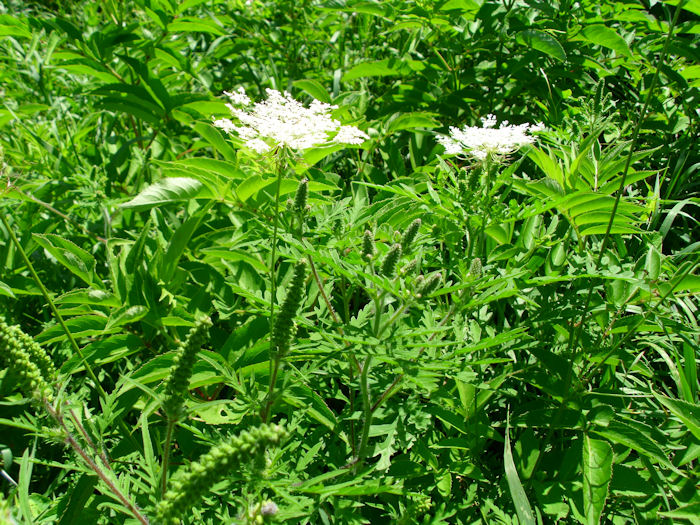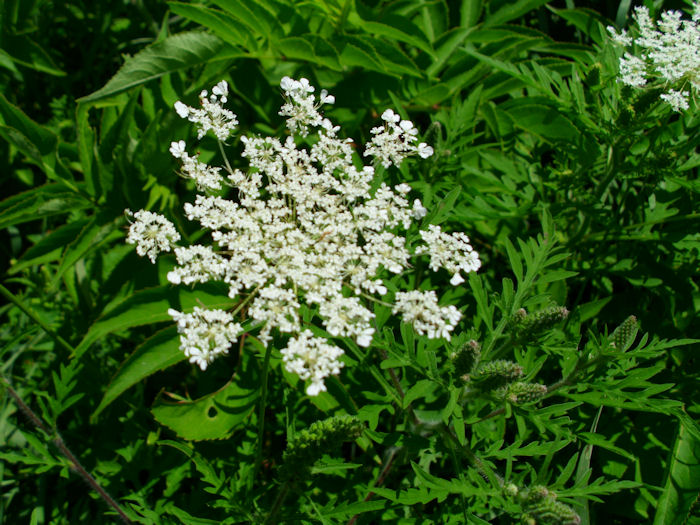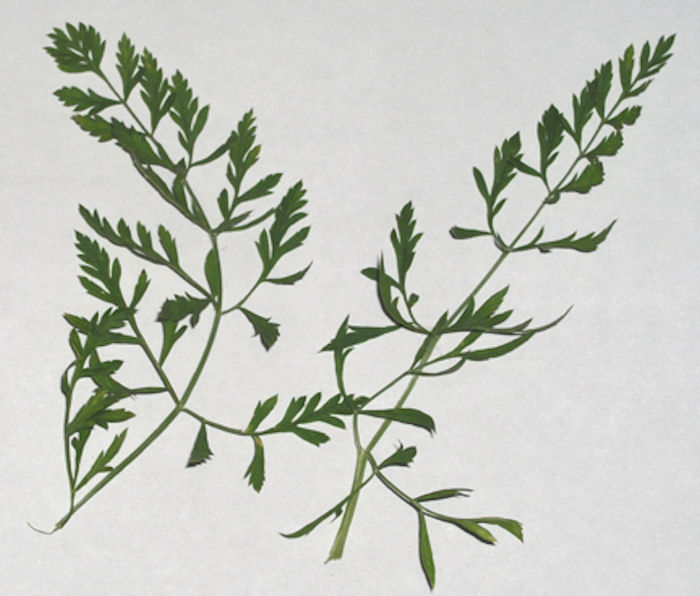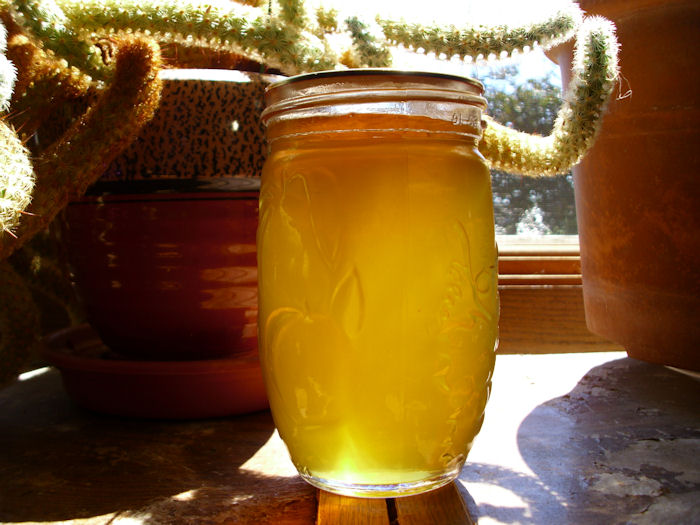Sometimes, the best herb or edible plant is the one you didn’t plant. Nature provides a number of edible plants that grow naturally where you live. I’ve shared about the berries that grow in our woods before. There are blackcaps, blackberries, gooseberries, wild grapes, wild plums, and choke cherries available to anyone who wants to pick them in the woods. You can also find any number of usable mushrooms and other useful plants out there. However, the wild grass area also has abundance to offer. One of the most useful plants is Queen Anne’s Lace, also known as wild carrot.
It’s quite possible that you’ve passed this plant by in the past because it normally grows in with the rest of the weeds. The large taproot is edible. However, you don’t want to dig it up mid-summer. It’s better to dig up a second year plant early in the spring or a first year plant late in the fall. Wait until the plant is dormant or you’ll end up with something that’s akin to shoe leather without much value. Older plants develop a woody interior (xylem) that’s most definitely unpalatable.
Some people actually use a tea made from the root for a number of medicinal purposes. When the root is used for medicinal reasons, the common wisdom is to dig it up in July, which is the same time the plant flowers in profusion.
Wild carrot is an ancestor of the modern cultivated carrot, but they’re different plants. In other words, it would require a lot of work to change Queen Anne’s Lace into anything resembling a domesticated plant and you should focus on the usefulness of the wild plant instead.
One of the most delightful uses of Queen Anne’s Lace is to make jelly from the flowers. You must pick a lot of fresh flowers—the more the better. I normally provide Rebecca with at least two shopping bags full of flowers to make jelly and it takes quite a while to obtain that many flowers, but the effort is most definitely worth it. The Queen Anne’s Lace flower looks like this.
In some cases, the center of the flower will contain a purple floret, but I’ve found that the purple floret is somewhat rare. Before you go out and pick a bunch of flowers that look just like this one though, be aware that many flowers have precisely the same coloration and similar appearance. For example, the hemlock flower and fool’s parsley are easy to confuse with this flower. Fortunately, it’s easy to avoid the mistake. Hemlock and fool’s parsley both tend to grow in wetter areas, while Queen Anne’s Lace prefers a drier spot to grow. In addition, Queen Anne’s Lace has a distinctive carrot leaf like the one shown here (the photograph is courtesy of my friend William Bridges):
When picking Queen Anne’s Lace, look for the flower in July, check the flowers carefully, and verify that the leaves are correct. If necessarily dig a plant up to ensure you’re getting the right one. The root will have a distinctive carrot aroma. If you take these four precautions, you won’t ever have any trouble.
There is conflicting information about the use of the leaves. I’ve never personally eaten the leaves and based on the conflicting information, I’d recommend not eating them. Here’s the Queen Anne’s Lace jelly recipe (courtesy of Rebecca).
Queen Anne’s Lace Jelly
| 2 qts | Flower Heads, Rinsed |
| Boiling Water to Cover | |
| 2 | Lemons, Juiced |
| 2 packets | Certo |
| 6 cups | Sugar |
| Dash | Cinnamon or Nutmeg |
Infuse flowers in boiling water for 4 to 5 hours. Strain the result to obtain 5 cups of liquid. Add lemon juice, sugar, and spices. Bring the mixture to a boil. Add Certo. Bring to a full boil for 1 minute. Prepare the jelly according to the instructions on the Certo package. Can using a boiling water bath for 10 minutes.
The jelly has a subtle taste. It really is hard to describe, but think of something with an almost honey-like taste, but a bit of spiciness too. Add some tea and an English muffin, and you have a wonderful breakfast. The jelly ends up with a wonderful amber appearance.
So, what are your favorite wild plants? Do you use them regularly? Let me know at [email protected].




